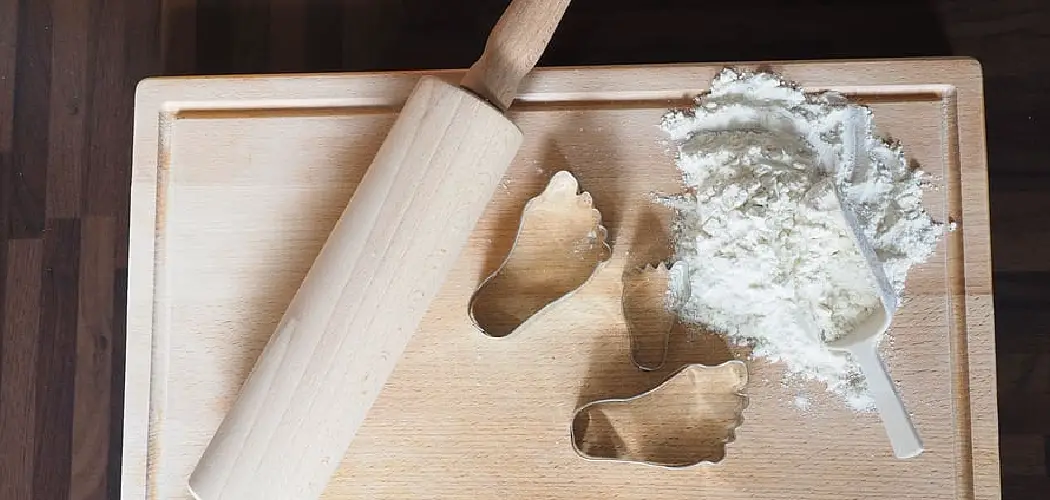Are you a baking enthusiast? If so, you must know the importance of keeping your wooden rolling pin clean and well-maintained. After all, it is one of the essential tools in every baker’s kitchen.
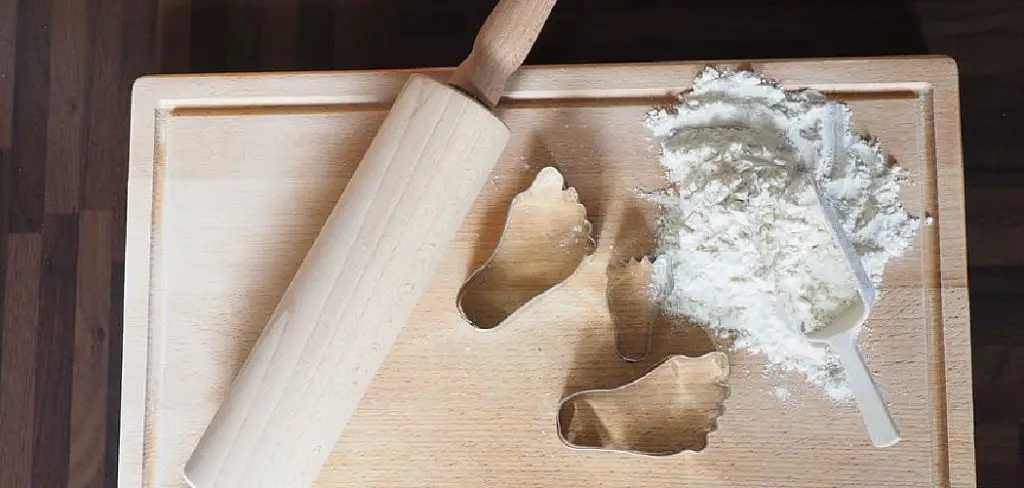
Caring for your wooden rolling pin properly not only extends its life but also ensures the safety and quality of the foods you prepare with it. Unlike other kitchen tools that can withstand the harsh environment of a dishwasher, wooden rolling pins require special attention to maintain their best condition. Cleaning a wooden rolling pin is not complicated, but it does require specific steps to prevent the wood from cracking, warping, or becoming a breeding ground for bacteria.
In the following sections, we’ll guide you through the best practices for how to clean wooden rolling pin to keep them smooth and functional for years of baking enjoyment.
What Are the Importance of Keeping Your Wooden Rolling Pin Clean?
Properly cleaning your wooden rolling pin is crucial for several reasons.
First and foremost, keeping it clean ensures no leftover ingredients or bacteria on the surface can contaminate your food. Wooden rolling pins have natural pores and crevices where food particles can accumulate without cleaning thoroughly, leading to potential health risks.
Secondly, regular cleaning prevents your wooden rolling pin from developing an unpleasant odor due to prolonged exposure to food and moisture. The more you use it without proper maintenance, the more likely it will start smelling bad and become unusable for baking.
Lastly, keeping your wooden rolling pin clean helps maintain its integrity and function. Wood is a porous material that can easily absorb moisture, leading to warping or cracking if not dried properly. Regularly cleaning it prevents the wood from degrading and ensures that your rolling pin remains smooth and functional.
What Will You Need?
Before we dive into the cleaning process, let’s gather all the necessary supplies. You’ll need the following items:
- Mild dish soap or baking soda
- Warm water
- Clean towel or cloth
- Soft-bristle brush or toothbrush
Once you have all these items, it’s time to start cleaning your wooden rolling pin.
10 Easy Steps on How to Clean Wooden Rolling Pin
Step 1: Prepare the Cleaning Solution

The first step in cleaning your wooden rolling pin is to create a gentle cleaning solution. You can either use a small amount of mild dish soap or make a paste with baking soda mixed with warm water. Avoid using harsh cleaning agents, as these can strip the wood of its natural oils and cause damage over time. If using dish soap, add just a few drops to a bowl of warm water.
For the baking soda paste, combine about three tablespoons of baking soda with enough water to form a spreadable paste. Both methods will help lift food particles and grime without being too abrasive on the wooden surface.
Step 2: Gently Scrub the Surface
Dip the soft-bristle brush or toothbrush into the cleaning solution and begin to scrub the surface of the rolling pin gently. Make sure to work the brush into the crevices and any etched patterns where food particles are more likely to be trapped. Be careful not to saturate the wood as excessive moisture can penetrate and weaken the material. Use circular motions to remove any sticky residues or flour build-up. If needed, apply a dab of the baking soda paste directly onto tougher spots for extra cleaning power.
Step 3: Rinse with Warm Water
After scrubbing, it’s important to rinse the rolling pin to remove any soap or baking soda residue. Run a clean cloth under warm water and wring it out so it’s damp, not dripping wet. Wipe the rolling pin all over with the damp cloth, making sure to clean off all the cleaning solutions. Rinse the cloth as needed to ensure you’re working with clean water. Remember to be gentle and not soak the wood to prevent absorption of excess water, which can harm the rolling pin.
Step 4: Dry Thoroughly
Immediately after rinsing, use a clean towel to thoroughly dry the rolling pin. It’s vital to remove as much moisture as possible to prevent the wood from soaking it up, which could lead to swelling, warping, or cracking. Be sure to dry all surfaces and ends of the rolling pin, and if it has any intricate carving or deep grooves, carefully blot these areas with the towel.
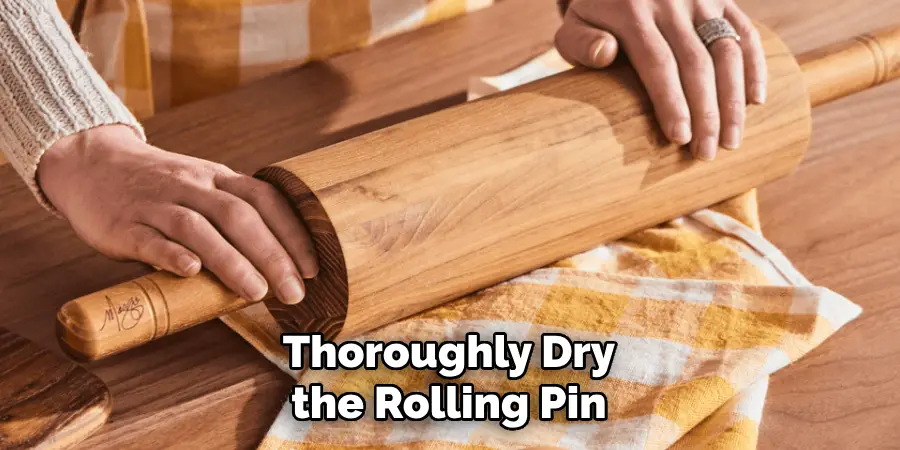
Allow the rolling pin to air dry completely on a rack or upright in a container to ensure air circulation reaches all parts before storing it away. This may take several hours, depending on the humidity and airflow in your workspace.
Step 5: Condition the Wood
Once your rolling pin is completely dry, the next step is to condition the wood to keep it from drying out and cracking. Use a small amount of food-grade mineral oil or a mixture of beeswax and oil designed specifically for wooden kitchen tools. Apply a thin, even layer over the entire surface of the rolling pin using a clean cloth or paper towel.
Work the oil or wax mixture into the wood in a circular motion, covering the surface thoroughly. Allow it to penetrate for a few minutes, then wipe off any excess with a clean cloth. This conditioning will help create a protective barrier and maintain the rolling pin’s smooth and polished finish.
Step 6: Store Properly
After conditioning, it’s essential to store your wooden rolling pin properly to protect it from damage further. Choose a dry place away from direct sunlight and heat sources, as these can cause the wood to dry out or warp. Storing it in a drawer with felt lining can provide extra protection from scratches. If hanging your rolling pin, ensure the hooks are not too tight around the handles, which could cause pressure marks. Proper storage will help maintain the rolling pin’s condition and prevent any need for future repairs or replacements.
Step 7: Regular Maintenance Checks
To preserve the longevity and performance of your wooden rolling pin, establish a routine for regular maintenance checks. Inspect your rolling pin for any signs of damage like cracks, splinters, or warping every few months, especially if you bake frequently. If you notice minor surface scratches or imperfections, lightly sand them with fine-grit sandpaper and recondition the wood.
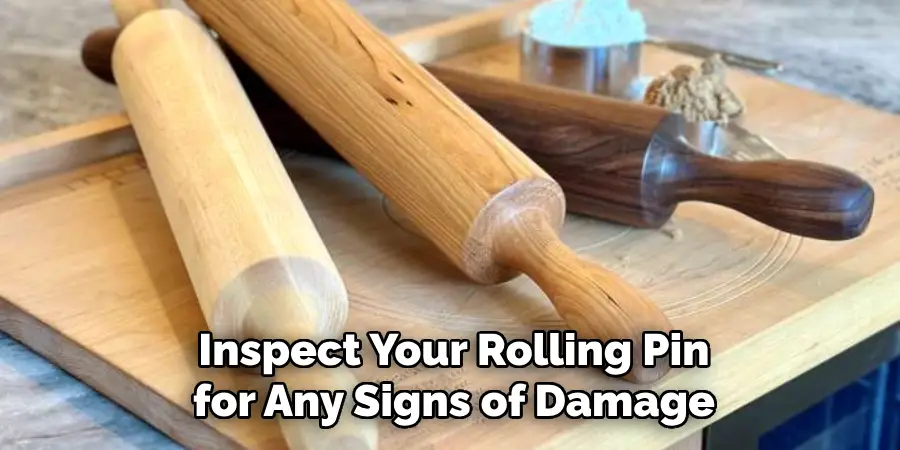
This proactive approach can prevent small problems from becoming significant issues that require replacing your rolling pin altogether. Remember, dealing with blemishes early on can help maintain the rolling pin’s effectiveness and ensure it remains a beloved tool in your baking arsenal.
Step 8: Use with Care
Proper use is just as important as cleaning when it comes to maintaining your wooden rolling pin. Always apply even pressure when rolling out dough to avoid creating uneven surfaces or stress points on the pin. If you’re working with sticky dough, remember to lightly flour the surface of the rolling pin to prevent it from sticking and creating a mess.
Additionally, avoid using your rolling pin for tasks it’s not meant for, such as crushing or pounding, which can damage both the rolling pin and your countertops. Using your wooden rolling pin correctly will extend its life and enjoy consistent performance with every bake.
Step 9: Know When to Replace
Despite your best efforts, there may come a time when replacing your beloved wooden rolling pin is necessary. Signs that it’s time for a new one include significant cracks or splinters, deep grooves in the surface, or warping that cannot be fixed with sanding. These issues can affect the pin’s functionality and make baking difficult and frustrating.
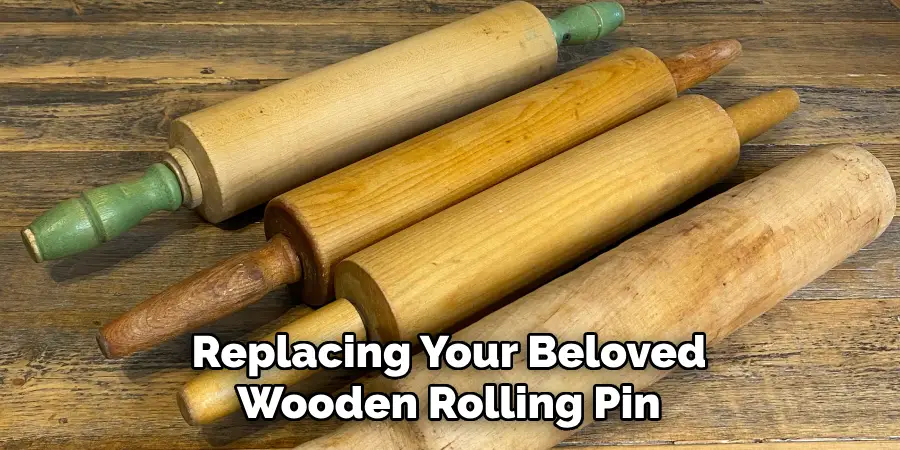
It’s better to invest in a new, high-quality wooden rolling pin than struggle with an old, damaged one. Remember to follow proper cleaning and maintenance techniques with your new rolling pin to ensure it lasts for years to come.
Step 10. Final Thoughts
Wooden rolling pins are fantastic tools for any baker, providing even pressure and helping create beautiful dough. With proper care and maintenance, your wooden rolling pin can last for generations, becoming a cherished family heirloom. Remember to clean gently, rinse thoroughly, dry completely, condition regularly, store properly, perform routine checks, use with care, and replace when necessary.
By following these steps, you can ensure your wooden rolling pin remains in excellent condition and produces delicious results for all your baking endeavors.
5 Additional Tips and Tricks
- Avoid Soaking in Water: Prolonged exposure to water can cause the wood to swell and crack. Clean your rolling pin with a damp cloth and immediately dry it thoroughly to prevent water damage.
- Disinfect with Vinegar: If you’re concerned about bacteria, wipe the surface with a cloth dampened with a mixture of water and white vinegar. The acidity of vinegar acts as a natural disinfectant without harming the wood.
- Use Lemon and Salt for Stains: For tough stains, sprinkle coarse salt on the rolling pin and use half a lemon as a scrubber. The abrasiveness of the salt, combined with the acid from the lemon, can help remove stains without the use of harsh chemicals.
- Periodic Oiling: Apply a thin coat of food-grade mineral oil to your wooden rolling pin periodically to keep it conditioned and prevent it from drying out or cracking. Always ensure the oil is fully absorbed before using.
- Store Properly: Keep your wooden rolling pin in a cool, dry place out of direct sunlight. This helps to prevent warping and cracking. A dedicated drawer or a rolling pin holder can also protect it from getting scratched or dented.
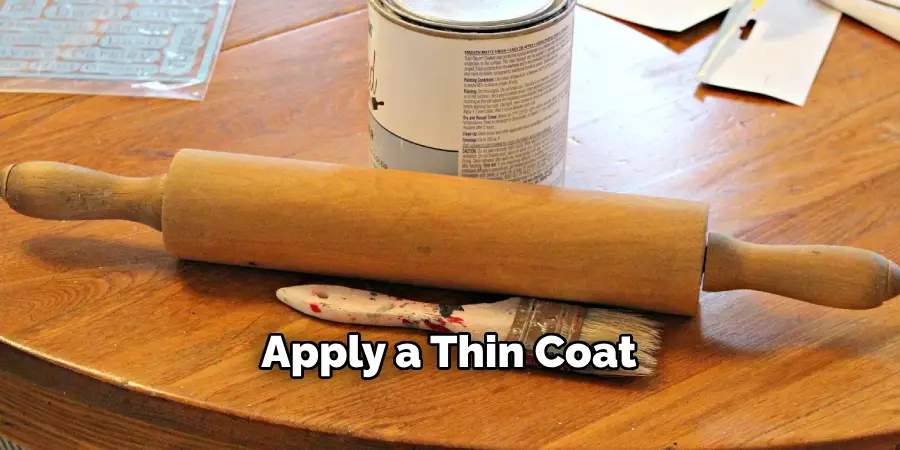
With these additional tips and tricks, you can ensure that your wooden rolling pin stays clean and in good condition for many years to come.
6 Things You Should Avoid
- Do Not Use Dish Soap: Harsh detergents can strip the natural oils from the wood and lead to drying and cracking. If you must use soap, choose a mild one and apply sparingly.
- Avoid Abrasive Scrubbers: Steel wool or stiff brushes can cause scratches on the rolling pin’s surface, where bacteria can accumulate. Instead, use a soft cloth or sponge for gentle cleaning.
- Never Submerge in Dishwater: Immersing your rolling pin in a sink filled with water can cause the wood to warp and split. Always clean the surface without fully submerging it in liquid.
- Skip the Dishwasher: Wood should never go in the dishwasher. The intense heat and prolonged exposure to water and detergents can wreak havoc on your wooden rolling pin.
- Don’t Neglect to Dry Immediately: Don’t let the rolling pin air-dry after cleaning, as this can encourage water absorption. Dry it thoroughly with a clean towel right after washing to maintain its quality.
- Avoid Extreme Temperatures: Exposure to extreme heat or cold can cause the wood to expand or contract, leading to warping or cracking. Avoid storing your wooden rolling pin near sources of heat, such as stoves or ovens, and do not leave it in a hot car. Store it in a cool, dry place instead.
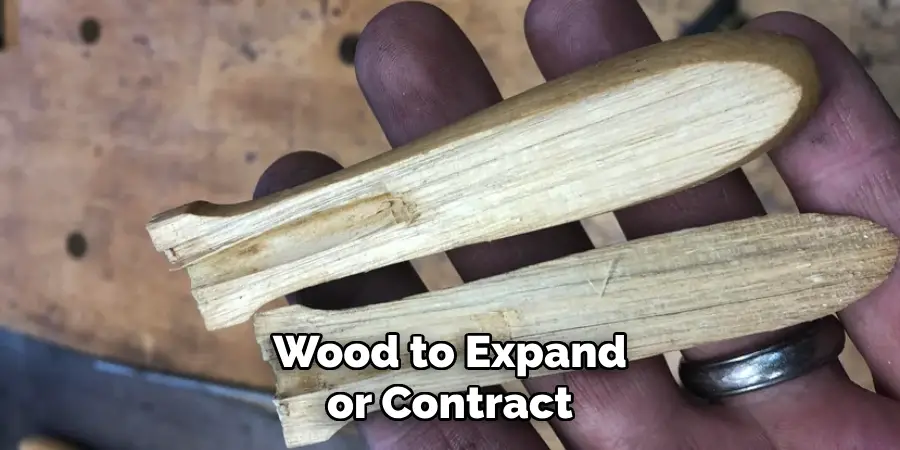
By avoiding these mistakes, you can keep your wooden rolling pin in top condition and extend its lifespan. With proper care, it can continue to help you create delicious baked goods for years to come.
How Do You Keep Wooden Rolling Pins From Sticking?
Wooden rolling pins can sometimes stick to dough, making it difficult to roll out evenly. Here are a few tips to prevent your wooden rolling pin from sticking:
- Flour the Surface: Lightly dust the surface and the rolling pin with flour before rolling out your dough. This creates a barrier between the wood and the dough, preventing them from sticking together.
- Chill the Rolling Pin: If you’re working with a particularly sticky dough, try placing your wooden rolling pin in the fridge for a few minutes before using it. The cooler temperature can help prevent sticking.
- Use Parchment Paper: Placing a sheet of parchment paper between the dough and the rolling pin can also prevent sticking. The paper acts as a barrier, allowing the dough to roll smoothly without sticking to the wood.
- Rotate and Flip: As you roll out your dough, rotate it in different directions to prevent sticking. You can also flip the dough over periodically and add more flour if needed.
With these tips, you can easily prevent your wooden rolling pin from sticking and create perfectly rolled-out dough every time. Remember to also clean and store your rolling pin properly to maintain its quality and extend its lifespan.
Are Wooden Rolling Pins Better Than Metal?
The choice between wooden and metal rolling pins ultimately depends on personal preference and what works best for your baking needs. However, there are a few key differences to consider when deciding between the two:
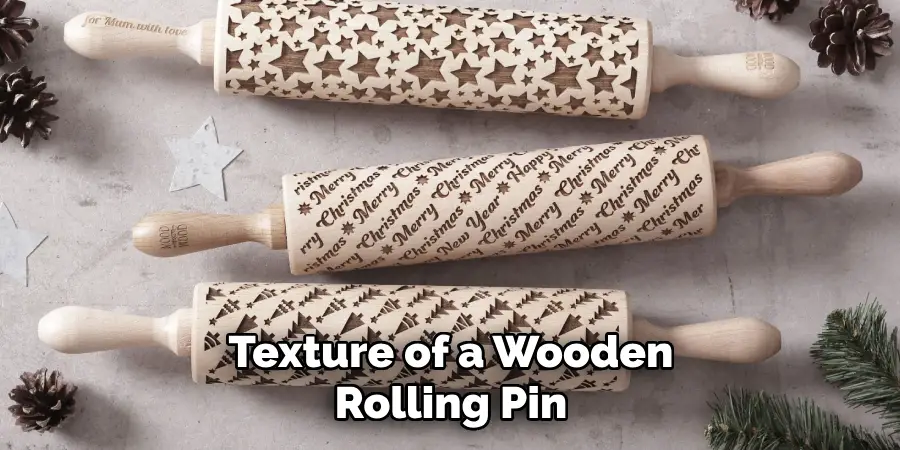
- Weight: Wooden rolling pins tend to be lighter than their metal counterparts, making them easier to handle and maneuver.
- Texture: The texture of a wooden rolling pin can help create a better grip on the dough, preventing it from slipping and sticking. On the other hand, metal rolling pins may have a smoother surface, making it more challenging to roll out certain types of dough.
- Versatility: Wooden rolling pins are generally more versatile as they can be used for both delicate pastries and heavy-duty doughs. On the other hand, metal rolling pins may be better suited for specific tasks, such as rolling out pie crusts.
- Durability: Wooden rolling pins tend to have a longer lifespan than metal ones. They are less prone to dents and scratches and can last for many years with proper care.
Ultimately, both wooden and metal rolling pins have their advantages and disadvantages. It’s best to try out both types and see which one feels more comfortable for you. Some bakers even prefer to have both on hand for different baking tasks.
What is the Best Oil for a Rolling Pin?
When it comes to choosing the best oil for your rolling pin, there are a few options that work well:
- Food-grade Mineral Oil: This type of oil is safe for use with food and has no scent or flavor, making it an excellent choice for wooden rolling pins.
- Coconut Oil: Coconut oil is another great option as it is solid at room temperature, making it easy to apply and less likely to drip. It also has natural antimicrobial properties that can help prevent bacteria growth on your rolling pin.
- Olive Oil: Olive oil is a common household ingredient that also works well as a wood conditioner for rolling pins. However, it may have a slight scent and flavor that could transfer to your dough.
It’s essential to avoid using oils that can turn rancid, such as vegetable or canola oil. These types of oils can leave an unpleasant taste and odor on your rolling pin and potentially ruin your baked goods.
Conclusion
In conclusion, properly cleaning and maintaining your wooden rolling pin ensures that it remains in optimal condition, contributing to the consistency and quality of your baking endeavors. A gentle hand wash, immediate, thorough drying, and regular oiling with a suitable, non-rancid oil will enhance the rolling pin’s longevity.
By steering clear of soap, abrasive scrubbers, dishwashers, and extreme temperatures, you protect the integrity of the wood. Your attention to these details will reward you with a reliable tool that stands the test of time and continues to be a beloved ally in the kitchen.
Hopefully, this guide on how to clean wooden rolling pin has provided you with valuable tips and information on how to clean and care for your wooden rolling pin. With proper maintenance, it will continue to help you create delicious treats for many years to come. Happy baking!
You Can Check It Out To Clean Wood Veneer

